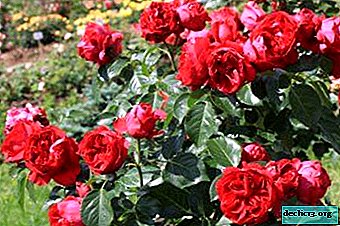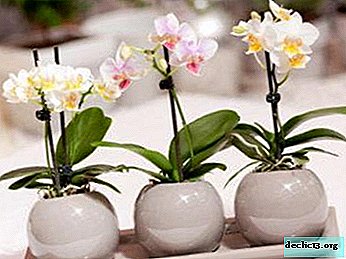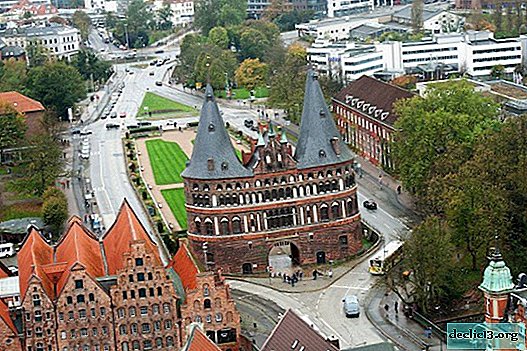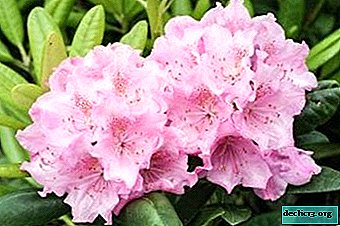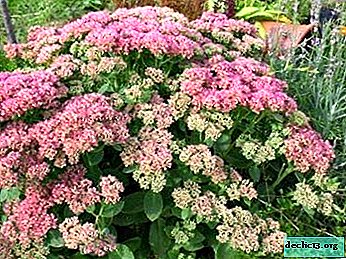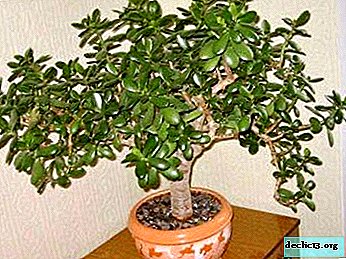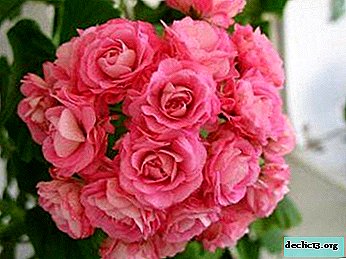Spectacular varieties of anthurium with orange flowers: a photo, description and care at home
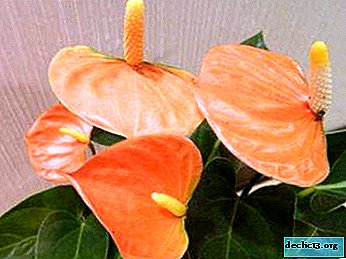
Anthurium, an ornamental plant from the Aroid family, is an excellent choice for gardeners who love bright colors.
His palette includes various tones from white to intensely red. The article will discuss varieties with orange flowers.
Here is given a botanical description of the plant, as well as the features of caring for this flower.
In addition, here you will find photos of varieties of orange anthurium and information on what diseases such flowers can suffer.
Botanical characteristic
Among Russian flower growers, Anthurium is known as "Men's happiness" because of the belief that he brings happiness to men. In European countries it is called the “Flamingo Flower” due to the bright, often red or pink color of the bract. The Latin word Anthurium is made up of Greek roots meaning "flower" and "tail".
The name of the genus is associated with the shape of the inflorescence. In 1876, the French botanist E.F. Andre sent to Europe a copy of a plant hitherto unknown in the Old World. So the exotic flower ended up in the English Royal Kew Botanical Garden, from where, thirteen years later, it was brought to Hawaii. There it was first grown on an industrial scale.
In nature Anthurium is found in hot regions of North and South America. - from Mexico to northern Argentina, in humid tropical and subtropical forests.
In culture, two species are usually used as decorative flowering plants: Anthurium Andre, a large flower more suitable for a greenhouse, and Anthurium Scherzer with spiral inflorescences. Anthurium Andre is known for its beneficial properties - it purifies the air of harmful substances.
Anthurium juice causes digestive upset and skin irritation. The pot must be out of reach of children and pets. Before working with the plant, gloves should be worn.Varieties: description and photo
Next, we will talk about popular varieties and provide photos (what are the types and varieties of anthurium?). Most often you can find the following varieties of Anthurium Andre with an orange bract:
Baby
"Baby Orange" (Baby Orange, Orange baby) - a small bush, bract (leathery leaf at the base of the inflorescence) bright orange with a green border. The variety is easy to maintain..

Champion
Champion Orange (Champion Orange) - average bush size. Bract red-orange with a coral hue.
Anthurium should be purchased only from trusted sources, as unscrupulous sellers sometimes paint flowers to give them a more presentable appearance.

Amaretti
As for Anthurium Scherzer, then variety "Amaretti" ("Amaretti") with variegated bracts looks very impressivein which the orange color is combined with yellow and green tones.

How to care at home?
Temperature
Anthurium is a thermophilic plant. The optimum temperature for it is 20-27 ° C. At the end of summer, the temperature is gradually lowered, and in winter the flower is kept at 16-17 ° C. The temperature should not fall below 15 ° C.
Watering
Anthurium, a native of tropical rainforests, loves moisture, but does not tolerate fluid stagnation. In summer, it is watered about twice a week, by winter, watering is gradually reduced to once a week. The basic rule is Before watering, make sure that the topsoil in the pot is dry, but you can not allow the complete drying of the land coma.
Water from the tap should stand and warm to room temperature; lime water is softened before irrigation. After watering, drain the water from the pan.Shine
Since anthurium does not tolerate direct sunlight, it is advisable to place it on the east or west side. If the windowsill faces south, then the flower needs to be protected from the sun.
Priming
The main rule - the soil should be loosewell permeable to air and moisture. You also need to remember that the flower does not like acid soil. You can buy ready-made soil mix for orchids, or you can prepare the soil yourself. To do this, in equal proportions connect the sheet land with peat.
You can also mix the bark with sphagnum, peat and charcoal and add a bit of pine needles and brick chips. Well suited for anthurium and hydroponics.
Pruning
Pruning is done to cut too thick a bush, or to remove faded or white-spotted leaves. For this, small garden scissors or pruners are suitable. You need to start the procedure from above and perform it at an angle to the bottom.
- Eliminate dry leaves and branches, discolored leaves.
- Then the plant is sprayed with water from a spray.
- Spraying is repeated until the wounds are healed.
Top dressing
 Anthurium is fed with liquid fertilizers for decorative flowering plants.. The concentration of the solution should not exceed 20% of the dose indicated on the package.
Anthurium is fed with liquid fertilizers for decorative flowering plants.. The concentration of the solution should not exceed 20% of the dose indicated on the package.
You should not fertilize the plant more than once a month - the leaves will grow, and buds will not form.
It is also advised to feed the flower every 3-4 months with a freshly prepared solution of Epsom salt (1-2 tablespoons in 4.5 liters of water). Since the end of August, feeding has been reduced to completely stop them in the autumn-winter period.
Pot
Do not take too big a pot. The roots of the anthurium should reach its walls, otherwise they may rot. It is preferable to use a plastic pot, rather than clay, as ceramics contribute to the drying of the soil.
The pot should have large holes for drainage, as well as a rim-stand on the lower edge - this contributes to the access of air to the roots. Use of a cache-pot is not allowed.Transfer
In the first years of the life of anthurium, annual transplants are required, then they are performed when the plant becomes closely in a pot. Immediately after the purchase, the flower cannot be transplanted - it must get used to new conditions.
- At the bottom of the new pot you need to lay the drainage layer. Typically, claydite is used for this, on top of which coconut fiber or sphagnum is laid out. On top of the drain, the main soil layer is covered.
- The plant is taken out of the old pot, the roots are carefully cleaned of soil, washed under running water.
- If there is no rot on the roots, then the flower is transplanted into a new pot.
- A layer of sphagnum can be laid on the surface of the soil.
Wintering
In winter, anthurium is not fertilized, kept at a cool temperature (but not lower than 15 ° C!), Watered no more than once a week.
Breeding
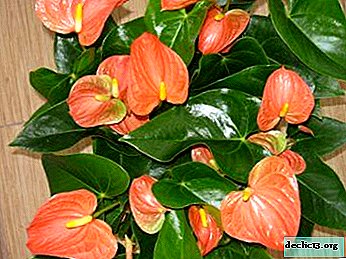 Dividing the bush. Transplantation is performed as described above, a large bush is divided into several small ones. They are seated in separate containers.
Dividing the bush. Transplantation is performed as described above, a large bush is divided into several small ones. They are seated in separate containers.- Seeds. A laborious process that does not guarantee the preservation of varietal traits. When juicy berries ripen, seeds are extracted from them, they are disinfected in a solution of potassium permanganate and laid out on the surface of the soil (leaf or peat).
During seed germination (8-15 days) they are kept at a temperature not lower than 22-24 ° C. One and a half-month shoots in the phase of this leaf dive.
- Apical cuttings. Cuttings obtained from the top of the plant are planted directly in wet sand.
- Side shoots with aerial roots. Shoots are planted immediately in a pot.
Diseases and Pests
Excess moisture in the pot leads to rotting of the roots. With a lack of heat and trace elements, the leaves begin to wrinkle and curl.Of the fungal diseases of anthurium, the most common are:
- anthracnose;
- Septoria
The flower and parasites are affected:
- mealybug;
- aphids;
- thrips.
Fungicides and insecticides are used to solve these problems.
Similar flowers
Let's talk about some other indoor plants with large orange flowers.
- Zantedesia, or calla, a native of Africa - a relative of Anthurium, also belongs to the Aroid family. The shape of the inflorescence is similar to anthurium, but the bract is not so hard. There are varieties with orange flowers.
- Freezea, or Vriesia, from the Bromeliad family - a plant with long thick leaves, sometimes striped like a watermelon. The orange inflorescence in shape resembles a tightly woven braid-spikelet. It should not be confused with freesia - they are connected only by the similarity of names.
- Amaryllis from the Amaryllis family - bulb plant. On a long thick peduncle, large fragrant flowers bloomed in inflorescences bloom. In each inflorescence from 2 to 12 flowers. There are varieties with orange flowers.
- Hippeastrum belongs to the same family as amaryllis, and these two plants are often confused. It differs in a larger flower size and lack of aroma. In inflorescence there are no more than 6 flowers.
- Clivia - Another representative of the Amaryllis family. Flowers (most often - orange) are smaller in size than amaryllis and hippeastrum, but the inflorescences are huge, several dozen flowers.
Anthurium is simple enough to keep in your home or office. Orange flowers will look spectacular both solo and in combination with other varieties.

 Dividing the bush. Transplantation is performed as described above, a large bush is divided into several small ones. They are seated in separate containers.
Dividing the bush. Transplantation is performed as described above, a large bush is divided into several small ones. They are seated in separate containers.